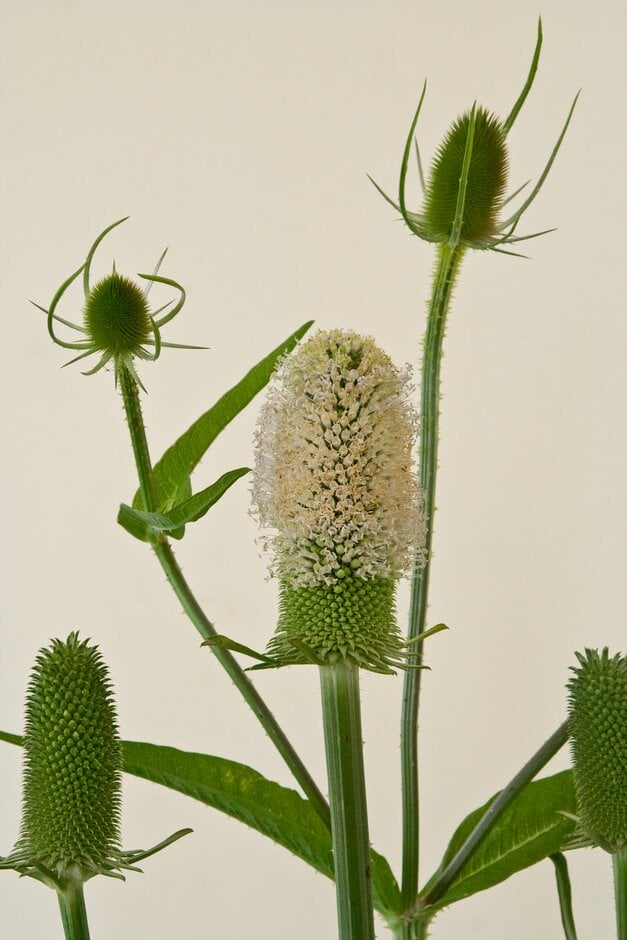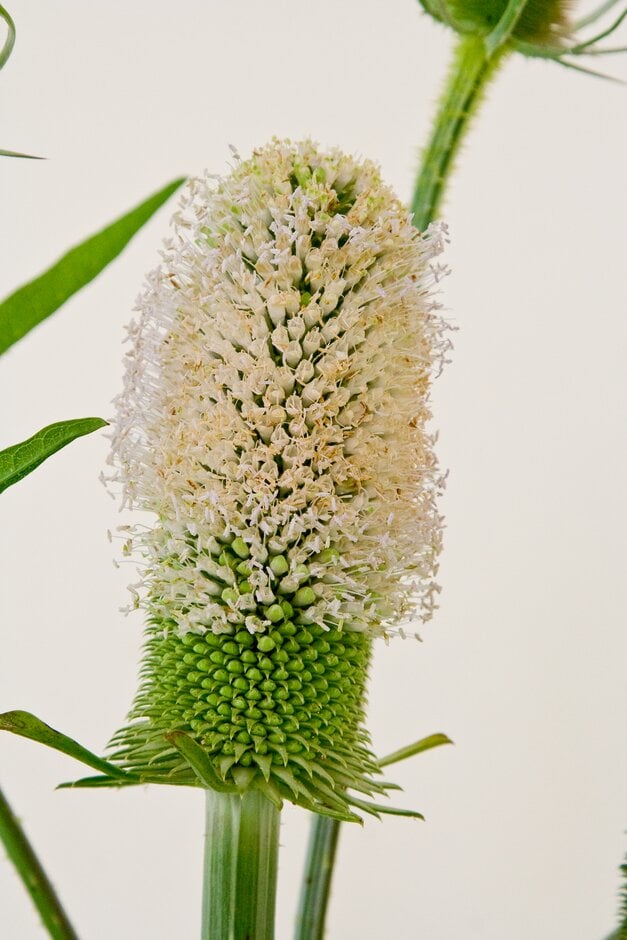Dipsacus sativus
fuller's teasel
A strongly upright biennial, with bright green, prickly foliage and branching, prickly stems. Bristly, cylindrical flowerheads carry small white flowers in summer. The seed heads dry naturally and can be used for cutting, or left for garden display where they are also popular with birds, especially goldfinches. D. sativus is a close relation of the well-known teasel (D. fullonum), but distinguished by the hooked bristles on the seed heads
Size
Ultimate height
1.5–2.5 metresTime to ultimate height
1–2 yearsUltimate spread
0.5–1 metresGrowing conditions
Moisture
Moist but well–drained, Poorly–drainedpH
Acid, Alkaline, NeutralColour & scent
| Stem | Flower | Foliage | Fruit | |
| Spring | Green | |||
|---|---|---|---|---|
| Summer | White | Green | ||
| Autumn | Green | Brown Grey Silver | ||
| Winter | Green |
Position
- Full sun
Aspect
South–facing or West–facing
Exposure
Exposed or Sheltered Hardiness
H7Botanical details
- Family
- Caprifoliaceae
- Native to GB / Ireland
- No
- Foliage
- Deciduous
- Habit
- Columnar upright
- Genus
Dipsacus are erect biennials or perennials with simple or pinnate leaves and crowded heads of numerous small flowers in dense terminal capitula, the calyx teeth bristly
- Name status
Correct
How to grow
Cultivation
Does best in deep, fertile soil in full sun, but tolerant of poorer soil and some shade
Propagation
Propagate by seed sown in situ in spring or autumn
Suggested planting locations and garden types
- Architectural
- Cottage and informal garden
- Wildlife gardens
- Cut flowers
- Flower borders and beds
Pruning
Cut down as flowers die off if self-seeding is a problem
Pests
May be susceptible to aphids
Diseases
Generally disease-free
Love gardening
Sign up to receive regular gardening tips, inspiration, offers and more
View our Privacy Policy
Get involved
The Royal Horticultural Society is the UK’s leading gardening charity. We aim to enrich everyone’s life through plants, and make the UK a greener and more beautiful place.

